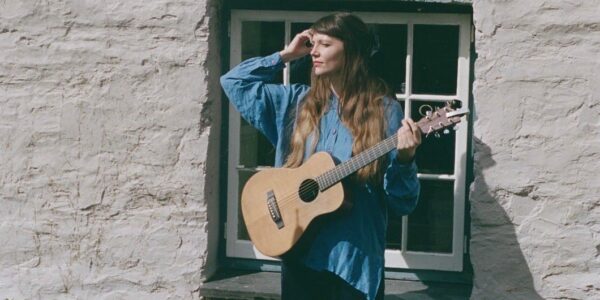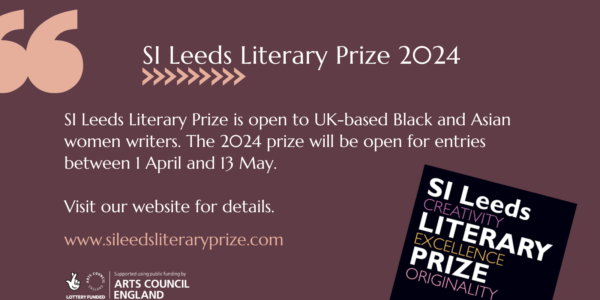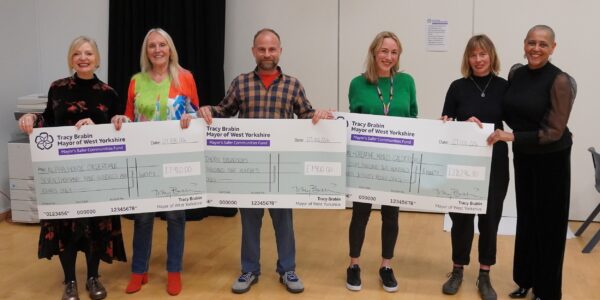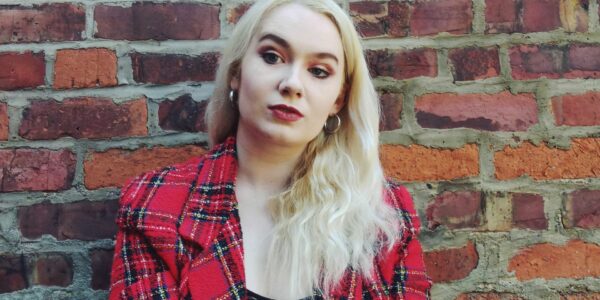Lara Feigel – The Stories We Tell
26 Aug 2020 / The Stories We Tell
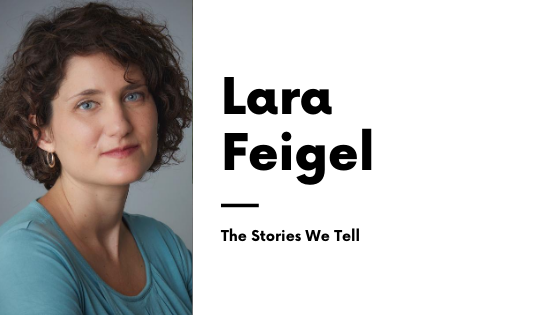
On Living alongside Dead Writers
‘Do you think, because I am poor, obscure, plain, and little, I am soulless and heartless? You think wrong! — I have as much soul as you — and full as much heart!’ This was a speech I made often inside my head, growing up, defying parents and teachers when they exerted authority without evincing understanding. I’d continue the dialogue, adapting the detail for my situation, but echoing Jane Eyre’s biblical rhythms as she speaks back to Mr Rochester, her employer. I was seduced by the prose and by the energy that words can acquire when conflict takes on an erotic charge. I think it was largely thanks to Jane Eyre that my early sexual fantasies were more vocal than bodily. My imaginary lovers spoke as I did in Brontë’s cadences; I was more easily aroused by language than by touch.
There were other writers too who I read with this urgency of identification. Emily and Anne Brontë soon joined their sister. On my mother’s bookshelves I found historical romances that you rarely hear about now. There was Gone with the Wind, of course, but alongside Margaret Mitchell there was Anya Seton, and a book called Désirée by Annemarie Selinko about Napoleon’s first love. I wonder if there are any sexually-inexperienced adolescents reading these books with similar ardour and curiosity today. It seems unlikely.
I found in reading an ease of access to other minds that I rarely found in life. I had friends, but I didn’t often encounter them as full people with the quivering bodies and souls I encountered in fictional women. In my late teens, I read biographies with the same driving need. Now it was Charlotte Brontë I identified with rather than her characters, channelled by her biographer Lyndall Gordon, whose genius lies in the way she identifies passionately with her subjects, thinning the membrane that separates us across the centuries. Soon it was Virginia Woolf, seen through the eyes of Hermione Lee, who brings a range of perspectives to her magisterial biographies, stepping up close to her subjects, but also moving away to see them across a wider landscape.
We were well-taught at school, but were left to our own devices more than students are now. I don’t think that anyone told me that it was wrong to think of characters as real people, or to believe writers to be knowable by their letters, diaries, novels. If they did, I wasn’t listening, because I was onto the next book. There was André Gide now, and Alain-Fournier. I had become curious about men.
Then at university things changed. For a start, I gained confidence in exposing myself to friends and, now, lovers. It turned out that I had my own language to describe my feelings, and I recast the experiences of adolescence in simpler prose. These were the early days of email, and we took to writing each other letters across the university, writing our way into being as I had in my adolescent diaries and inner monologues, but with more irony and with some sense that we were merely starting out and the great arias awaited us later on. I was into opera now, and my favourite characters were the Marschallin in Strauss’s Der Rosenkavalier and the countess in Mozart’s The Marriage of Figaro: two middle-aged women who give voice to heartbreaking passion with a restraint that makes their laments all the more moving. In listening repeatedly to their arias, I was educating myself in perspective.
It is lucky that I discovered opera, because I wasn’t getting that direct access to feeling from books any more. ‘Why would I read her letters?’ I remember asking a tutor who suggested I should read biographically around Woolf for an essay I wanted to write about her use of symbolism. My role, I informed her, was merely to analyse the text as a text. I suppose that she rolled her eyes. This was 2000, more than thirty years after Roland Barthes had written his essay ‘The Death of the Author’, pronouncing that ‘language alone acts, “performs”, and not “oneself”’, yet I seem to have been stuck in a rather unsophisticated version of 1967.
My point was that the Barthes essay, when I read it, resonated with how we were taught more broadly. We were taught to analyse form, to think about how writers were using language. There was no space for biography in a 2000-word undergraduate essay, no space for treating either characters or authors as real people. And they weren’t wrong to teach us this way, I think. Certainly it’s how I still teach my own undergraduates, most of the time, training them to look beyond the skin of words to see the muscles and sinews of texts, and then the skeleton beneath. It was how I wrote my first book, an academic monograph about writers in the 1930s and 40s who used cinematic technique for political ends. I was reading letters and diaries again, but in order to access a historical context that would enable me to see how the literary effects of the text intersect with their times.
Then something changed. After a decade of reading impersonally, I spent the Christmas holiday before I turned thirty reading the wartime love letters of Elizabeth Bowen, published as Love’s Civil War. I had written about Bowen’s wartime fiction in my monograph without being particularly curious about her as a person. Now I saw how autobiographical her great wartime novel, The Heat of the Day, had been. I saw too that this was writing not to record life but to interpret it and to fantasise about how it could have been. I saw, as perhaps I did in adolescence, that writing itself can be driven by the same urgency as reading once was for me.
There were ecstatic, self-forgetful weeks spent in the archives of Elizabeth Bowen, Rose Macaulay and Graham Greene. This was more pleasurable than anything I’d done intellectually in the decade between starting my BA and gaining my PhD. And it resulted in a new kind of book, The Love-Charm of Bombs, where I read and lived my way through the Second World War alongside five writers who looked back on it as the most intense experience of their lives.
It’s a messy, baggy, unselfconscious book, and it marked for me a turning point, where I unsheathed my teenage self, thinking again that souls and hearts could be exposed without irony and taken seriously, and that language gave us the power to do this. I was inspired in writing it by other writers of inward-looking group biographies: Daisy Hay, Jenny Uglow, Richard Holmes.
There are a number of ways I could describe the writing I’ve done since then, but one is to say I have made a series of attempts to honour the urgency of my adolescent reading, and to allow myself (and my readers) to do this again in adulthood. Certainly, the most satisfying responses I’ve received have been the ones where readers write with their own feelings of identification with the figures I write about, or with me, as exposed in my books.
After The Love-charm of Bombs, I wrote another work of cultural, biographical history, this time a historical survey of the writers and artists from Britain and America who were involved in the reconstruction of Germany after the second world war. This was a work of intellectual history, with a set of arguments about Germany, about the role of culture in reconstruction and in the Cold War, about the possibility of culture to effect change. But it was also a book driven by feelings of passionate identification, this time with Martha Gellhorn as she raced Hemingway to the front line, and with Thomas Mann’s children Klaus and Erika Mann as they returned to the ruins of the tarnished country which had formed them.
I decided that I wanted to confront the question of identification head-on when I started reading Doris Lessing in my mid-thirties. She had recently died, and friends of an older generation had encouraged me to read her. I hadn’t made it through The Golden Notebook when I started it as an undergraduate, but I now found that Lessing and her autobiographical heroine Anna Wulf spoke to me directly across the decades about the particular paradoxes I was confronting in my life: how as a woman to reconcile my need to be desired by men with my wish for sexual equality, and how as someone entering the middle phase of adulthood to find a structure for writing and living that made room for the stasis and failure that seemed to characterise my life at that time.
I had recently had a miscarriage, I felt stuck within a marriage where we’d predicated happiness on changes which failed to materialise. Lessing offered in particular a vision of freedom: both the inward freedom that she found as a reader, writer and wanderer (she grew up ranging around the bush in Zimbabwe), and the political freedom that she asserted as a woman and as a communist, however misguided she later believed her earlier politics to have been. We were now in an age characterised by books which blend memoir with cultural history or biography: Helen MacDonald’s mesmerising H is for Hawk, Edmund de Waal’s Hare with Amber Eyes. When I came to write about Lessing, I wrote a book about freedom where I placed myself centre-stage alongside her. It was a gamble, but it felt like an honest one. I wanted it to be clear that when I analysed her as a daughter, mother, lover and writer, I was bringing in my own experiences of family life, motherhood, sex and writing. My marriage ended while I was writing the Lessing book. I don’t think it was a coincidence.
It can sound very peculiar to say that your major life decisions have been influenced by the unwitting mentorship of a dead writer, especially a writer who blends wisdom with misguidedness to such a degree as Lessing. Yet this is I think what happened. She took me outside the narrowness of my own middle-class London world and showed me other ways to think about life. She gave me the confidence to believe that if we allow ourselves to risk failure and loneliness we may be living more fully. ‘I am interested only in stretching myself,’ Anna Wulf says in The Golden Notebook, ‘in living as fully as I can.’
It’s been a while since I read Lessing. But she was succeeded for me by another fiercely independent woman of her generation, the American writer Mary McCarthy, whose generation-defining novel of women’s lives The Group came out the year after The Golden Notebook. I read The Group while I was on maternity leave with my daughter, a baby conceived by IVF just as my marriage ended. I was happy. The decisions my ex-husband and I had made felt right, and I was delighted to have a second child, to have this new creature burrowed in my breast, or snuffling away next to me at night. But I was also lonely, and I was thinking about friendship.
In Free Woman, my book about Lessing, I had taken inspiration from a woman who burned through friendships and usually ended up alone. Now I found in McCarthy’s novel a group of friends who provided a kind of refuge, promising that I could join them, that it might be possible to go through life alongside people other than a husband.
McCarthy’s novel is the story of a group of eight women as they journey from college into adulthood. Reading it, I identified with McCarthy as much as her characters. I liked the way she combined intimacy with a more essayistic voice. I knew McCarthy as the glamorous ‘dark lady of American letters’, a key player in the Partisan Review of the 1950s and then the New York Review of Books crew in the 1960s. Yet here was a book about the ordinary experiences of young women: we see them going anxiously to the doctor for birth-control and struggling to breastfeed their babies. She managed to find a way to combine this intimate novelistic detail with more essayistic forays into questions of feminism and progress. Why has so little changed for women, she was asking in 1963 as she wrote about women’s lives in the 1930s. Why were women still caught between family and career, still struggling with what, today, we call mansplaining, gaslighting and violent men? Depressingly, these were questions I could ask in my own day too.
So this time, I decided to write a novel in response to the novel – The Group – that I’d been reading with urgent need. I wanted to think about friendship, and the way we live alongside and compare ourselves to our friends. I wanted to think about women’s lives, and about turning forty as I was about to do, and confronting both the pleasures and fears of possibilities narrowing.
This was going to be a novel situated among my own very particular milieu in London, but I took from McCarthy her title and a few of her characters’ personalities and names. Doing this, I could feel her beside me as I wrote. Sometimes, as I read through what I was writing, I wondered what she would make of what I was doing, noting her probable approval or disdain. We were in the age of autofiction now, and I took inspiration from writers I admire in the present – Rachel Cusk and Sheila Heti in particular – to think through how to narrate a book in a way that felt honest to me, allowing my own essayistic first-person voice to combine with the third-person storytelling I’d loved in McCarthy’s novel.
Who knows what McCarthy would make of it; who knows what readers will make of it now? I hope that they in turn might identify with some of these women, or might think that some of the questions my characters ask apply to their own lives. As for me, I am now reading D.H. Lawrence. It’s been Lawrence whose visions of community and apocalypse I’ve confronted the lockdown alongside.
This isn’t the fierce identification I once felt for him, reading him as I turned thirty and emerged out of that era of impersonal reading. It’s something more restrained and middle-aged, and I’m curious to see where that will lead. But certainly it comes as naturally to me now as it did in adolescence to think of dead writers as companions inside my head, and to live – sometimes wearily and sometimes joyfully – alongside them.
Find out more about The Stories We Tell.
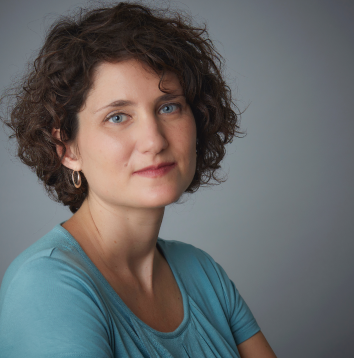 Lara Feigel is the author of five books, most recently a novel, The Group (John Murray) and Free Woman (Bloomsbury), a book about freedom, writing, motherhood and madness, which is part memoir and part biography of Doris Lessing. She has also written two books about culture in the Second World War and its aftermath. She reviews regularly for the Guardian and other publications, and is a Professor of Modern Literature and Culture at King’s College London, where she co-directs the Centre for Modern Literature and Culture and runs the Ivan Juritz Prize.
Lara Feigel is the author of five books, most recently a novel, The Group (John Murray) and Free Woman (Bloomsbury), a book about freedom, writing, motherhood and madness, which is part memoir and part biography of Doris Lessing. She has also written two books about culture in the Second World War and its aftermath. She reviews regularly for the Guardian and other publications, and is a Professor of Modern Literature and Culture at King’s College London, where she co-directs the Centre for Modern Literature and Culture and runs the Ivan Juritz Prize.
